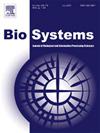白蚁隧道活动中任务转移缺失的生态驱动因素:模拟研究
IF 1.9
4区 生物学
Q2 BIOLOGY
引用次数: 0
摘要
地下白蚁建立复杂的地下隧道网络,以有效地收集食物。经验观察表明,特定的个体致力于挖掘,很少互换任务。然而,考虑到白蚁种群的隧道能量有限,期望在疲劳和休息的个体之间定期进行任务转换以保持持续的隧道挖掘和优化觅食是合理的。为了探索这种差异,我们开发了一个复杂的基于个体的模型,模拟白蚁在两种情况下的隧道挖掘过程:一种是任务转移,另一种是没有任务转移。在任务转移场景中,最初的白蚁群挖掘隧道,消耗所有的能量,然后返回巢穴。然后,一个新的小组被部署到隧道尖端继续挖掘,共同创造最终的隧道模式。在无任务转移场景下,初始组完成隧道挖掘,不需要过渡到后续组。我们比较了这两种场景下的隧道模式,重点关注隧道的方向性和大小。结果表明,两种情况下隧道的方向性差异无统计学意义。然而,在没有任务转移的情况下,隧道的大小明显更大,这表明在没有任务转移的情况下,连续挖隧道可能会提高食物搜索效率。在讨论部分,我们简要地讨论了由于模拟和实际白蚁系统之间的差异而引起的模型的局限性。此外,我们触及的想法,以解释这一事实,即只有固定比例的工人在一个白蚁群体参与隧道活动。本文章由计算机程序翻译,如有差异,请以英文原文为准。
Ecological drivers for the absence of task shifting in termite-tunneling activity: A simulation study
Subterranean termites build complex underground tunnel networks to efficiently gather food. Empirical observations indicate specific individuals are dedicated to tunneling, rarely interchanging tasks. However, considering the limited tunneling energy of termite populations, it is reasonable to expect regular task shifts between fatigued and rested individuals to maintain continuous tunneling and optimize foraging. To explore this disparity, we developed a sophisticated individual-based model simulating the termite tunneling process in two scenarios: one with task shifting and one without. In the task shift scenario, the initial group of termites excavates the tunnel, expends all their energy, and returns to the nest. A new group is then deployed to the tunnel tip to continue the excavation, collectively creating the final tunnel pattern. In the no task shift scenario, the initial group completes the tunneling without transitioning to subsequent groups. We compared the tunnel patterns of these two scenarios, focusing on tunnel directionality and size. The comparison revealed statistically no significant difference in tunnel directionality between the scenarios. However, the tunnel size was notably larger in the absence of task shift, suggesting that continuous tunneling without task shift may enhance food searching efficiency. In the discussion section, we briefly address the limitations of the model arising from differences between the simulations and actual termite systems. Additionally, we touch on the idea to explain the fact that only a fixed proportion of workers in a termite colony participate in tunneling activities.
求助全文
通过发布文献求助,成功后即可免费获取论文全文。
去求助
来源期刊

Biosystems
生物-生物学
CiteScore
3.70
自引率
18.80%
发文量
129
审稿时长
34 days
期刊介绍:
BioSystems encourages experimental, computational, and theoretical articles that link biology, evolutionary thinking, and the information processing sciences. The link areas form a circle that encompasses the fundamental nature of biological information processing, computational modeling of complex biological systems, evolutionary models of computation, the application of biological principles to the design of novel computing systems, and the use of biomolecular materials to synthesize artificial systems that capture essential principles of natural biological information processing.
 求助内容:
求助内容: 应助结果提醒方式:
应助结果提醒方式:


